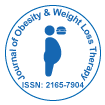当社グループは 3,000 以上の世界的なカンファレンスシリーズ 米国、ヨーロッパ、世界中で毎年イベントが開催されます。 1,000 のより科学的な学会からの支援を受けたアジア および 700 以上の オープン アクセスを発行ジャーナルには 50,000 人以上の著名人が掲載されており、科学者が編集委員として名高い
。オープンアクセスジャーナルはより多くの読者と引用を獲得
700 ジャーナル と 15,000,000 人の読者 各ジャーナルは 25,000 人以上の読者を獲得
インデックス付き
- 索引コペルニクス
- Google スカラー
- Jゲートを開く
- Genamics JournalSeek
- 国際農業生物科学センター (CABI)
- レフシーク
- ハムダード大学
- エブスコ アリゾナ州
- OCLC-WorldCat
- SWBオンラインカタログ
- CABI全文
- キャブダイレクト
- パブロン
- ジュネーブ医学教育研究財団
- ユーロパブ
- ブリストル大学
- パブメド
- ICMJE
役立つリンク
オープンアクセスジャーナル
このページをシェアする
抽象的な
Morbid Obesity in End Stage Heart Failure: How Safe is Bariatric Surgery in Ventricular Assist Device Recipients?
Aittigrine S*, Tozzi P, Hullin R, Yerly P, Regamey J, Rösner L, Rusca M, Mantziari S, Suter M and Kirsch M
Introduction: About 25% of patients suffering end stage heart failure (ESHF) are obese. BMI>40 prevents patients from receiving an organ graft because morbid obesity (MO) dramatically increases mortality after heart transplantation (HTx). Moreover, MO (BMI>40) increases the risk of thromboembolic events by 20%. The treatment of ESHF in obese patients must include the treatment of their obesity.
Bariatric surgery (BS) is the most effective treatment for MO, but has prohibitive surgical mortality in ESHF patients. One strategy is to first implant a Left Ventricular Assist Device (LVAD) to provide hemodynamic stability during BS and eventually reduce patient’s BMI to values compatible with HTx (bridge-to-candidacy approach). However, stopping the anticoagulation for BS increases the risk of LVAD thrombosis and/or thromboembolic events, particularly in presence of MO. We report the therapeutic pathway we applied to solve this challenging situation.
Method: A 54 years old man, former smoker, with a BMI of 43.8 kg/m2 and sleep apnea syndrome, suffered from ESHF due to ischemic (LAD occlusion) and rhythmic cardiomyopathy (non valvular atrial fibrillation) with CHA2DS2- VASC score 5. Left ventricle ejection fraction was 20%. Mean pulmonary pressure was 35 mm Hg and cardiac index was 2.0 l/min/m2. His BMI was the only contraindication to HTx. Our institutional Heart Failure Team decided to implant a continuous flow LVAD to improve patient’s hemodynamic condition and then perform a sleeve gastrectomy (SG).
Results: LVAD implant (Abbott HeartMate 3) was performed under CPB (75 min) using a minimal invasive approach through an upper ministernotomy and a left anterior hemi thoracotomy. The operation and post-operative phase were uneventful. The patient was extubated less than 12 hours after the surgery and left ICU on postoperative day (POD) 3. Clopidogrel and anti-vitamin K treatment were introduced on POD 3. Despite nutritional management and rehabilitation, the patient’s weight increased by 7 kg during the first postoperative months. Thus, it was decided to perform SG using a laparoscopic approach 10 months after LVAD implant. Sintrom was suspended 3 days before the procedure and replaced by prophylactic IV Heparin (anti-Xa<0.1). Sintrom was reintroduced on POD 3. The operation was uneventful despite three previous abdominal open surgeries, with no need of laparotomy conversion. The patient was discharged at POD 10. Patient lost 22 Kg in the first 3 months after SG (BMI<35), he is now listed to HxT.
Conclusion: LVAD followed by BS represents an effective therapeutic strategy to make ESHF obese patients eligible for HTx. New generation LVADs make the management of anticoagulation treatment safer than ever even in patients at high risk for thromboembolic complications.

 English
English  Spanish
Spanish  Chinese
Chinese  Russian
Russian  German
German  French
French  Portuguese
Portuguese  Hindi
Hindi